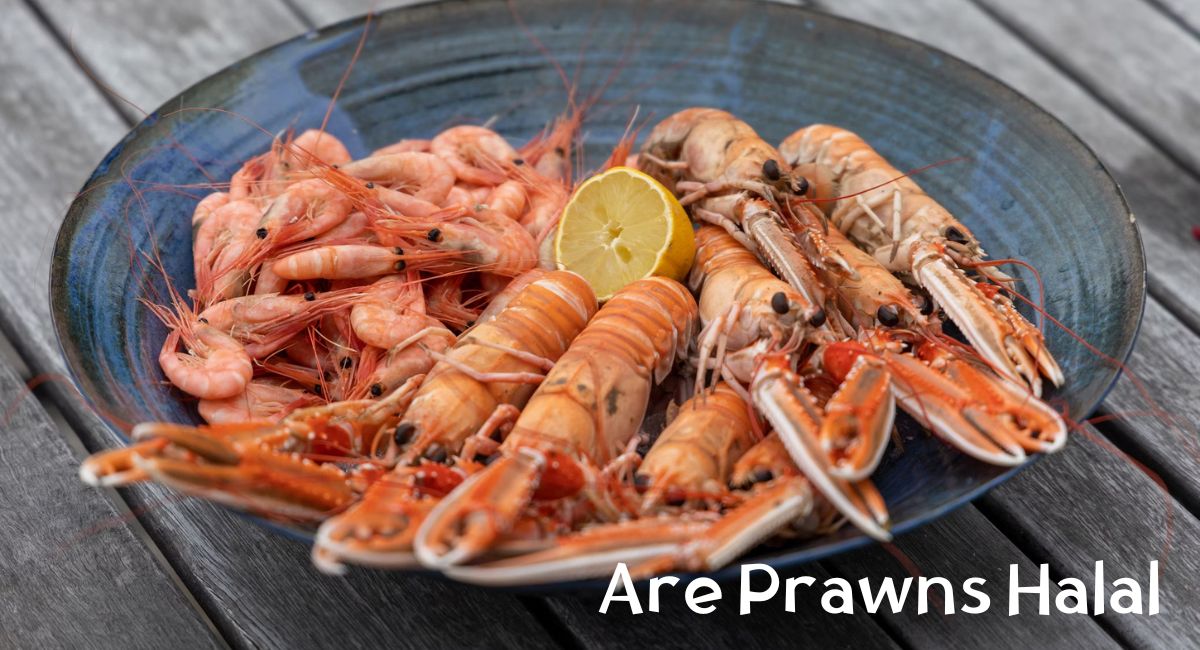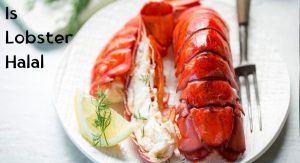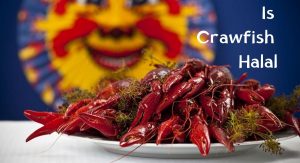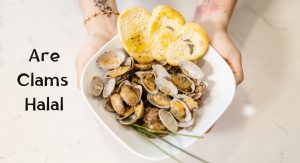Prawns, with their widespread popularity and culinary versatility, are a topic of interest among Muslims who seek assurance in their dietary choices. This article aims to provide a direct and trustworthy exploration of the question: Are prawns halal?
By examining the criteria set by Islamic dietary laws, understanding halal certification processes, and considering relevant perspectives, we aim to shed light on this important aspect of Islamic dietary practice.
What are Prawns
Prawns are fascinating creatures that belong to the order of decapods, which means “ten-footed.” They are small aquatic crustaceans and are closely related to lobsters and crabs. One distinguishing characteristic of prawns is their exoskeleton, which is a hard outer covering that protects their body.
The exoskeleton of a prawn is thin and somewhat translucent, allowing it to be flexible for movement. This exoskeleton provides support and protection for the prawn’s body.
The body of a prawn is divided into three main segments: the head, thorax, and abdomen. The head contains various sensory organs, including a pair of antennae, compound eyes, and specialized appendages for feeding. Prawns use their antennae to sense their environment, detect food, and communicate with other prawns.
The thorax of a prawn is the middle segment and is equipped with five pairs of legs, which are used for walking, swimming, and capturing prey. The first three pairs of legs are modified into pincers, called chelipeds, which the prawn uses for grabbing and manipulating objects. These chelipeds are particularly useful for feeding and defense.
The abdomen of a prawn is the hindmost segment and is typically longer and narrower than the other segments. It houses the internal organs and also has appendages called pleopods or swimmerets. The swimmerets are used for swimming, as well as for carrying and protecting eggs in female prawns.
Prawns can be found in a wide range of aquatic environments, including both saltwater and freshwater. Some species of prawns are migratory, while others inhabit specific habitats such as rivers, estuaries, coral reefs, or the ocean floor. They are known for their adaptability and can thrive in various water conditions.
In addition to their ecological importance, prawns are also highly valued for their culinary uses. They are considered a delicacy in many cuisines around the world and are commonly used in dishes like stir-fries, curries, pasta, and salads. The meat of prawns is flavorful, tender, and versatile, making them a popular choice among seafood lovers.

Are Prawns Fish
Prawns are not fish. They are small aquatic crustaceans and belong to the order of decapods, which includes various species of edible crustaceans. While prawns and fish are both water-dwelling creatures, they are distinct in their classification and biological characteristics.
The distinction between prawns and fish lies in their taxonomic classification. Prawns are decapods, meaning they have ten legs and an exoskeleton, while fish belong to the class Pisces and have a backbone, gills, and fins. Prawns are part of the order Decapoda, whereas fish encompass a much broader category of aquatic animals.
Although prawns and fish may have some similarities in appearance, such as both having fins, they differ significantly in their anatomical features, reproductive strategies, and evolutionary history. Prawns have an exoskeleton and undergo molting as they grow, while fish have internal skeletons and undergo a different growth process.
Are Shrimp and Prawn the Same Thing
Shrimp and prawn are not the same thing, although the terms are often used interchangeably in certain contexts. While they share similarities, there are differences between shrimp and prawn that distinguish them from each other.
Both shrimp and prawns belong to the same broad category of decapod crustaceans, meaning they have ten legs and exoskeletons. They also have similar appearances, live near the floor of the water bodies they inhabit, and are commonly used in cooking. However, there are several key differences that set them apart:
- Taxonomic Classification: Shrimp are part of the sub-order Pleocyemata, while prawns belong to the sub-order Dendrobranchiata. This difference in sub-orders reflects their evolutionary and biological distinctions.
- Size: In general, prawns tend to be larger than shrimp, although there can be variations in size within each category. However, it’s important to note that size alone is not the sole determining factor in differentiating between shrimp and prawns.
- Habitat: Shrimp are predominantly found in saltwater environments, while prawns are more commonly associated with freshwater habitats. However, both shrimp and prawns can be found in both saltwater and freshwater settings.
- Anatomy: There are subtle differences in the anatomical features of shrimp and prawns. Prawns typically have larger legs with claws on three pairs and branching gills, while shrimp have shorter legs, claws on two pairs, and lamellar gills.
- Culinary Usage: The usage of the terms “shrimp” and “prawn” can vary based on regional preferences. In the United Kingdom, Australia, New Zealand, and Ireland, the term “prawn” is generally used to describe both true prawns and shrimp, while in North America, the term “shrimp” is more commonly used.
Types of Prawns
There are various types of prawns, each with its own characteristics and culinary uses. Here is some types of prawns:
- Giant Tiger Prawn (Penaeus monodon): The giant tiger prawn is an important species in aquaculture and is widely farmed for food. It is known for its large size and commercial significance. This prawn has a sweet and succulent flavor with a firm texture. It is often described as having a rich and slightly briny taste.
- Black Tiger Prawn (Penaeus monodon): Also known as Asian tiger shrimp or black tiger shrimp, this species is widely reared for food and has culinary importance. It has a sweet and meaty flavor with a firm texture.
- Whiteleg Shrimp (Litopenaeus vannamei): This species of prawn is widely cultivated in aquaculture and is known for its white flesh and mild flavor. It is one of the most popular shrimp species worldwide.
- Indian White Shrimp (Fenneropenaeus indicus): Found in the Indian Ocean and the Persian Gulf, this prawn species is commercially important and is known for its sweet flavor and firm texture. It is often preferred for grilling or sautéing due to its ability to retain moisture.
- Banana Prawn (Fenneropenaeus merguiensis): This species of prawn is commonly found in Australia and Southeast Asia. It has a distinctive banana-like shape and is used in various culinary preparations. It is often described as having a delicate and buttery taste with a slightly nutty undertone.
- King Prawn (Melicertus latisulcatus): King prawns are large-sized prawns with a slightly sweet and rich flavor. They have a firm and meaty texture, making them well-suited for grilling, barbecuing, or using in hearty dishes.
- Northern Prawn (Pandalus borealis): Also known as cold-water prawns, these prawns are found in the North Atlantic Ocean. They have a sweet and delicate flavor with a subtle hint of brininess. Their firm and tender texture makes them popular for cold preparations like seafood cocktails or salads.
- Freshwater Prawns (Macrobrachium species): There are several species of freshwater prawns that are consumed worldwide. These prawns are primarily found in freshwater habitats and are known for their unique flavors and textures. They have a slightly sweet and earthy flavor. With a firmer texture compared to their marine counterparts, these prawns are used in a variety of dishes such as curries, stir-fries, and soups.
- Sand Prawn (Metapenaeus spp.): Sand prawns are small to medium-sized prawns that are commonly found in sandy coastal areas. They have a sweet and mild flavor with a hint of saltiness. Their tender and delicate texture makes them suitable for various cooking methods, including grilling, frying, or using in curries, stews, and soups.
- Coral Prawn (Penaeus semisulcatus): This prawn species is known for its bright orange color and is found in coral reefs and coastal areas. It has a slightly sweet and succulent flavor. It is known for its firm and juicy texture, making it popular in Asian cuisines such as stir-fries, noodles, or soups.
Are Prawns Halal
The matter of whether prawns are halal or not is a topic of much debate and conflicting opinions amongst Islamic scholars. Some scholars consider prawns permissible, while others believe that they are not. The different interpretations stem from the various schools of thought within Islamic jurisprudence.
The Shafi’i, Maliki, and Hanbali schools of thought all consider prawns to be halal. They argue that since prawns come from the sea, they are permissible to eat according to the Quranic verse that states that all sea creatures are lawful to consume. These schools do not differentiate between different types of sea creatures, including prawns. Therefore, these schools of thought consider prawns to be halal.
However, the Hanafi school of thought has a different interpretation. According to Imam Abu Hanifah, founder of the Hanafi school, only fish among the creatures that live in water are halal. He based this opinion on a hadith that specifically mentions fish (سمك samak). Since prawns are not mentioned in the hadith, they are considered haram by some Hanafi scholars.
The classification of prawns has also been a point of debate. Some Islamic scholars base their argument on the hadith that permits the consumption of locusts. They argue that since locusts are not technically classified as fish, and yet are permissible to eat, the same rules apply to prawns.
Other scholars have attempted to classify prawns as a type of fish based on similar characteristics. However, modern classification experts define fish as creatures with a backbone, which live in water, swim with fins, and breathe through gills. Since prawns lack a backbone and do not breathe through gills, they are not classified as fish by modern science. Instead, they are classified as insects.
Due to the conflicting opinions and classifications, the status of prawns in the Hanafi school of thought is debatable. Some Hanafi scholars view prawns as halal based on the similarity to fish or the interpretation of the hadith on locusts. Others argue that they fall outside the parameters of permissible animals and are, therefore, haram.
Overall, the status of prawns as halal or haram is still a contentious issue among Islamic scholars. The advice given to those who are unsure whether to consume prawns is generally to err on the side of caution. However, it is essential to seek advice from a knowledgeable Islamic scholar or mufti. They can offer more specific guidance on the matter based on the individual’s school of thought, interpretation and understanding. Whatever the decision, there should be no condemnation or criticism of those who choose to consume prawns, as opinions on the matter do vary widely.
Health Benefits and Nutritional Benefits of Prawns
Prawns provide various health benefits due to their nutritional composition. They are a good source of high-quality protein, which is essential for building and repairing tissues in the body. Additionally, prawns contain several vitamins and minerals that support overall health.
- Protein: Prawns are rich in protein, which is necessary for muscle growth, tissue repair, and enzyme production. A 3-ounce (85-gram) serving of cooked prawns provides about 20 grams of protein. Including prawns in your diet can help meet your daily protein needs.
- Omega-3 Fatty Acids: Prawns contain omega-3 fatty acids, which are beneficial for heart health. Omega-3s help reduce inflammation, improve blood lipid profiles, and may lower the risk of cardiovascular diseases. Consuming prawns as part of a balanced diet contributes to a healthy intake of these essential fatty acids.
- Minerals: Prawns are a good source of minerals like selenium, phosphorus, and iodine. Selenium is an antioxidant that supports the immune system and helps protect cells from oxidative damage. Phosphorus is vital for bone health, while iodine is necessary for proper thyroid function.
- Low in Fat: Prawns are relatively low in fat, particularly saturated fat. A 3-ounce serving of cooked prawns contains only about 0.2 grams of fat. Choosing lean protein sources like prawns can be beneficial for individuals watching their fat intake.
- Cholesterol Content: Prawns have a higher cholesterol content compared to many other seafood options. However, current research suggests that dietary cholesterol has a minimal impact on blood cholesterol levels for most people. The body’s overall cholesterol levels are influenced by various factors, including genetics and overall dietary patterns.
How to Cook and Eat Prawns

To cook and eat prawns, you can follow these general guidelines:
- Preparation: If the prawns are not already cleaned, remove the shells and heads to make eating easier after cooking. However, leaving the shells on can help retain moisture and flavor during cooking, especially if you plan to grill or pan fry them. If using prawns in a larger dish like a soup, it’s recommended to remove the shells.
- Cooking Methods: Prawns can be cooked using various methods such as grilling, pan frying, poaching, or as a part of other dishes like soups or curries. The choice of cooking method depends on your preference and the recipe you’re following. Grilled prawns are particularly delicious and can be marinated in garlic butter or seasoned with herbs and spices. They cook quickly, usually within 5 minutes, so it’s important to avoid overcooking to prevent them from becoming rubbery.
- Serving: Once the prawns are cooked, they can be enjoyed in multiple ways. You can serve them on their own as an appetizer, include them in salads, pasta dishes, stir-fries, or even use them as a topping for pizzas. Prawns can also be used to make flavorful curries, kebabs, or tacos. When serving prawns, you can garnish them with fresh herbs, lemon wedges, or a drizzle of sauce for added flavor.
- Eating: When it comes to eating prawns, you have a few options. If the prawns were served with the head and shell intact, you can use a knife to remove the head. The shell can be peeled off with your hands or using utensils. Some people prefer to remove the vein running down the back of the prawn, known as de-veining, before eating. However, this step is optional and not necessary if the prawns are served in their shells.
Remember, cooking times and techniques may vary based on the specific recipe you’re using. It’s always a good idea to refer to a reliable recipe source or cooking guide for detailed instructions on preparing and cooking prawns.
Frequently Asked Questions
1. What tastes better shrimp or prawn?
The taste preference between shrimp and prawns can vary from person to person as it is subjective. Both shrimp and prawns have a delicate and sweet flavor with slight differences in taste. Some people may find prawns to have a slightly sweeter and more robust flavor compared to shrimp, while others may prefer the taste of shrimp. It ultimately depends on personal preference and the specific species of shrimp or prawn being compared.
2. Are prawns healthier than tuna?
When comparing prawns and tuna in terms of health benefits, it’s important to consider their nutritional profiles. Prawns are a low-fat source of protein and contain essential nutrients like calcium, phosphorus, potassium, and vitamins A and E. They are also a good source of unsaturated fats, including omega-3 fatty acids. On the other hand, tuna is a fatty fish that is known for its high omega-3 fatty acid content and is a good source of protein. Both prawns and tuna can be part of a healthy diet, but the specific health benefits may vary depending on individual dietary needs and preferences.
3. Why do people eat prawns?
People eat prawns for various reasons, including their taste, versatility in cooking, and nutritional benefits. Prawns have a delicate and sweet flavor that is enjoyed by many seafood lovers. They can be cooked in numerous ways such as grilling, pan-frying, poaching, or used as an ingredient in soups, curries, salads, and pasta dishes. Prawns are also a good source of protein and contain essential nutrients like vitamins, minerals, and healthy fats. Additionally, prawns are popular in many culinary traditions and cuisines around the world, making them a desirable choice for meals and culinary exploration.
4. How much do prawns cost?
The retail price range for prawns in the USA is between US$10 and US$20 per kilogram or between US$4.54 and US$9.07 per pound. Global benchmark prices for shrimp, which includes prawns, are provided by the International Monetary Fund (IMF). These benchmark prices represent the global market and are measured in U.S. dollars per kilogram. They are period averages and are not seasonally adjusted.








